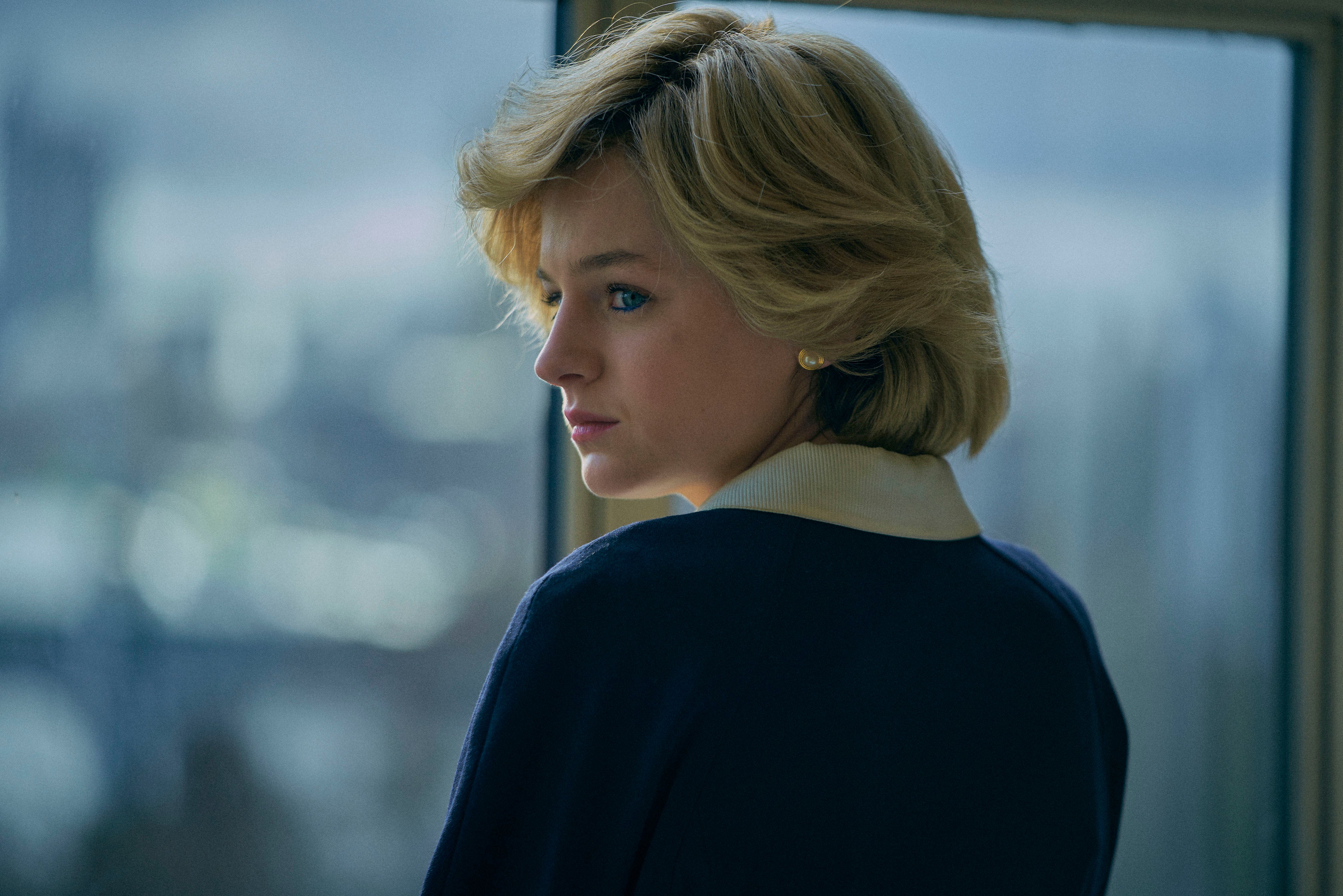The Crown was right to warn viewers of Princess Diana’s bulimia – it gave me the chance to prepare myself
Netflix’s hit show has trigger warnings ahead of new episodes that depict Princess Diana’s eating disorder. They are essential to give viewers a chance to protect their mental health, says Charlotte Cripps

The Crown’s Lady Diana Spencer – played by Emma Corrin – heads down a sweeping spiral staircase at Buckingham Palace in her dressing gown. It’s the middle of the night and nobody is around. She goes to the kitchen, opens one of the big metal fridges and gorges on desserts.
What happens after her binge is agonising to watch, as we see Diana bent over a toilet, her fingers stuck down her throat, making herself sick. It’s very real. It’s also very troubling.
The new fourth series of The Crown – which starts on Sunday – will include trigger warnings before episodes depicting Princess Diana’s battle with bulimia, as well as details of how to seek help if required.
To be forewarned is to be forearmed. For me, this was the first time I’ve seen bulimia acted out on the screen. It was like a ghost haunting me from the past. My brief bout of bulimia started in my late teens; I was copying a friend. It changed the way I felt. I wasn’t in the public eye like Diana was, but I did feel under pressure to be thin and perfect. While I might not suffer from PTSD – for which trigger warnings are essential – I appreciated the heads up. It is essential to give viewers that, so that past trauma doesn’t come flooding back unexpectedly.
But while there is a growing demand for trigger warnings – and viewers themselves are flagging triggering scenes for others online – they are still controversial. Some critics are dismissive, arguing that life itself doesn’t come with trigger warnings and that avoidance culture is a survivor’s biggest obstacle to recovery. But surely we should be able to decide if we want to relive an event if it can trigger fear, anxiety, or flashbacks?
Netflix’s 13 Reasons Why, which was blamed for a surge in self-harm in 2017, added extra warnings after its first season was criticised for its clumsy depiction of teen suicide and rape. The cast recorded a trigger warning introduction video that now plays ahead of each season premiere episode. The streaming service Britbox has included warnings ahead of old Doctor Who episodes from 1977 that are racially insensitive. Medical drama Grey’s Anatomy’s season 15, episode 19, started with a warning about scenes of sexual violence and sexual assault, because it included scenes with a bruised rape victim.
But while some TV and films carry specific trigger warnings – which consist of more than a fleeting maturity rating, which only broadly categorises triggers such as violence, sex and drug use – why is that others fall through the net?
All the Bright Places, the teen romantic-drama starring Elle Fanning and Justice Smith, was slammed by viewers in March for a lack of trigger warnings for its coverage of mental health and suicide after it was claimed that a misleading trailer didn’t match the seriousness of the sensitive content. Likewise, Netflix’s Ratched – the origin story of One Flew Over the Cuckoo’s Nest’s sadistic nurse, starring Sarah Paulson – was in the firing line in September for not having proper trigger warnings for the scenes of child sex abuse, torture, and gay conversion therapy.
Women’s activists called on Netflix to add specific content warnings to the Polish film 365 DNI in July, claiming it glamourised rape and sex-trafficking.
Game of Thrones is infamous for its scenes of sexual violence, so at least viewers tend to know what they are setting themselves up for, whereas with less widely discussed shows, triggering scenes can creep up on you by surprise. There was fury on social media when there was no warning about a suicide attempt in the final season of Orange is The New Black. The unexpected graphic rape scene at the start of Bates Motel was also triggering.
Some say trigger warnings can make us more stressed because they put us on high alert. But that’s not really the point. What’s important is that those of us most likely to be triggered have a choice not to relive our trauma. I might not have frozen in my chair and had a full-on panic attack when I watched The Crown, but that’s because I was in the right headspace. I was lucky enough to be prepared.
‘The Crown’ starts on Netflix on 15 November
Subscribe to Independent Premium to bookmark this article
Want to bookmark your favourite articles and stories to read or reference later? Start your Independent Premium subscription today.

Join our commenting forum
Join thought-provoking conversations, follow other Independent readers and see their replies